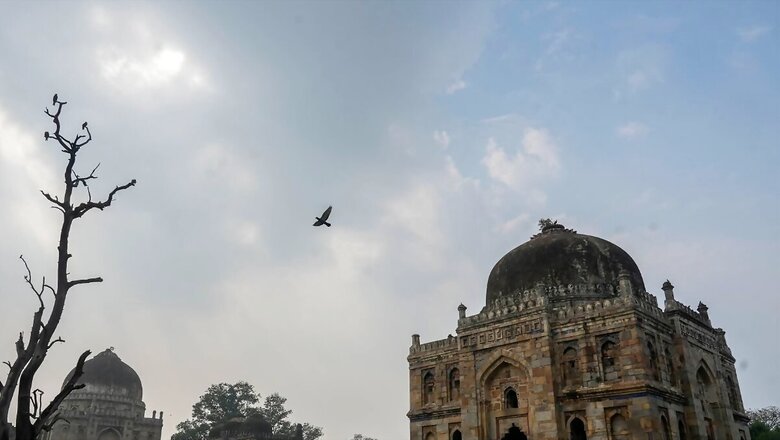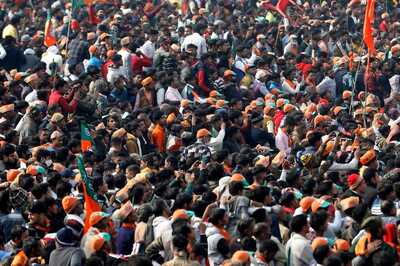
views
Clear skies, abundant sunshine and blowing winds— an obscure phenomenon in Delhi during winter came as a shock to many on Sunday as the capital breathed cleanest air on Diwali in eight years.
As per the Central Pollution Control Board (CPCB) bulletin released on Sunday at 4 pm, the air quality of the city was “poor” with AQI at 218.
Delhi recorded an AQI of 312 on Diwali last year, 382 in 2021, 414 in 2020, 337 in 2019, 281 in 2018, 319 in 2017, and 431 in 2016, according to the CPCB data.
An AQI between zero and 50 is considered ‘good’, 51 and 100 ‘satisfactory’, 101 and 200 ‘moderate’, 201 and 300 ‘poor’, 301 and 400 ‘very poor’, 401 and 450 ‘severe’ and above 450 ‘severe plus’.
Numberspeak | Delhi Saw More ‘Good’ to ‘Moderate’ Air Quality Days This Yr But November A Cause for Concern
How and Why It Happened?
The city experienced “very poor” to “severe” air quality for two weeks starting October 28 and a suffocating haze lingered over the capital during this period.
However, Delhi saw a sharp improvement in air quality just ahead of Diwali which can be attributed to intermittent rainfall on Friday and wind speed favourable for the dispersion of pollutants.
Saturday’s 24-hour average air quality index stood at 220, the lowest for the day before Diwali in eight years. To put this in perspective, Thursday’s 24-hour average AQI stood at 437.
The IMD had earlier predicted a marginal improvement in the air quality just ahead of Diwali, owing to favourable meteorological conditions, including light rain, under the influence of a western disturbance.
A western disturbance led to rains over most parts of northwest India, including Punjab and Haryana, effectively reducing the contribution of smoke from stubble burning to Delhi’s air pollution.
Once the western disturbance passes, the wind speed will increase to around 15 kilometres per hour on November 11 (Saturday) which will help disperse pollutants ahead of Diwali (November 12), an IMD official said earlier.
Pollution Update: Delhi-NCR Not Among Top 10 Worst Air Quality Stations in Asia, 8 Places from India in List
In accordance with the practice of the last three years, Delhi has announced a comprehensive ban on the manufacture, storage, sale, and use of firecrackers within the capital city.
However, sporadic incidents of firecracker burning were reported on Saturday night in several parts of the capital. Low temperatures and firecracker burning could lead to a rise in pollution levels in Delhi on Sunday night.
Stringent restrictions mandated under the final stage of the Centre’s air pollution control plan for Delhi-NCR — the Graded Response Action Plan (GRAP) — have also been implemented in the national capital.
The restrictions under stage IV of the GRAP, including a ban on all kinds of construction work and the entry of polluting trucks into Delhi, took effect on Sunday after the air quality in the city dropped to ‘severe plus’ (AQI above 450) levels.
GRAP categorises actions into four stages: Stage I — Poor (AQI 201-300); Stage II — Very Poor (AQI 301-400); Stage III — Severe (AQI 401-450) and Stage IV — Severe Plus (AQI above 450).
(With PTI inputs)


















Comments
0 comment